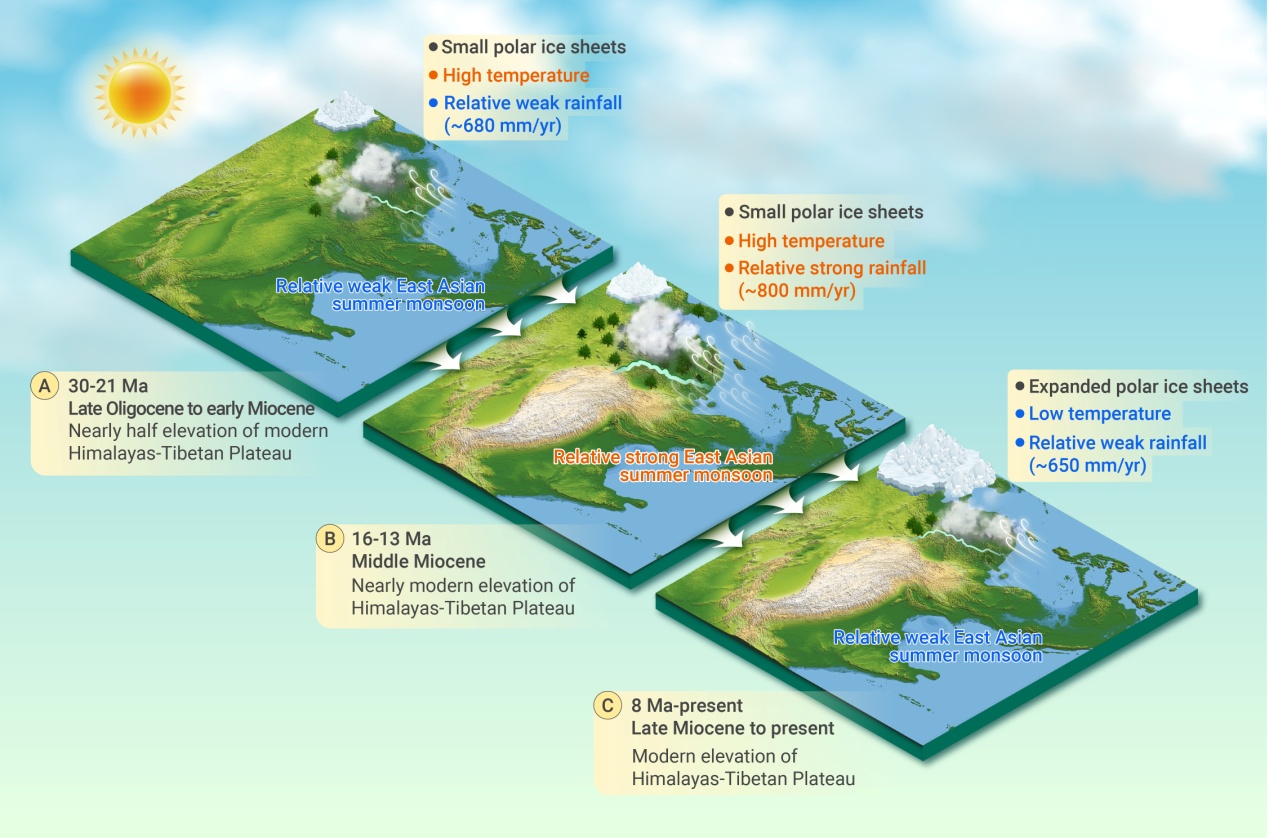The existence of the East Asian summer monsoon (EASM) is of profound significance for the regional climate and ecosystem. The EASM serves as a crucial driver of seasonal precipitation patterns, sustaining agricultural productivity and water resources in East Asia. It also facilitates heat and moisture transport, modulating the regional energy balance and influencing large-scale atmospheric circulation.
However, the lack of extensive, continuous, high-resolution monsoon records makes understanding the Cenozoic EASM evolution complex.
Recently, the research team led by Prof. WAN Shiming from the Institute of Oceanology of the Chinese Academy of Sciences (IOCAS), along with collaborators, have quantitatively reconstructed the evolutionary history of EASM precipitation over the past 30 million years based on the sediments from IODP Site U1501 in the northern South China Sea.
The study was published in The Innovation Geoscience on Apr. 14.
Based on the behavior of silicate minerals during the weathering process—specifically, the relationship whereby intensified (or weakened) chemical weathering, driven by stronger (or weaker) warm and humid monsoons, results in sedimentary clay minerals containing higher (or lower) proportions of kaolinite and relatively lower (or higher) proportions of illite—a quantitative model was developed using linear regression methods to correlate modern East Asian riverine clay mineral assemblages with precipitation and temperature.
This model was subsequently applied to sedimentary cores in the northern South China Sea, enabling the isolation of temperature effects from weathering indices and facilitating the quantitative reconstruction of the evolutionary history of EASM precipitation over the past 30 million years.
"We found global temperature fluctuations and the uplift of the Tibetan Plateau acted as 'dual engines', with temperature changes shaping the long-term trends of monsoon rainfall," said Associate Prof. ZHAO Debo, the study's corresponding author.
The rising plateau became a giant "air conditioner", reshaping atmospheric circulation and disrupting the original water-heat cycle more than ten million years ago, allowing East Asia to remain relatively humid during subsequent global cooling.
Based on the relationship between EASM precipitation and temperature changes regulated by atmospheric CO2 discovered in this study, under the current global warming background, with the increase in CO2 concentration caused by human activities, EASM precipitation may significantly increase.
For paleoclimate research, the application of the common ideas of using the present to interpret the past needs to be cautious because the possibility that tectonic movements may break the rules of the rhythmic evolution of climate between the present and the past. "Future research needs to carefully consider the complex interactions between geological processes and climate change," said Prof. WAN, the first and corresponding author.

Response of EASM precipitation to topography and global climate change in different periods. (Image by IOCAS)
(Text by ZHAO Debo)
Media Contact:
ZHANG Yiyi
Institute of Oceanology
E-mail: zhangyiyi@qdio.ac.cn
(Editor: ZHANG Yiyi)

